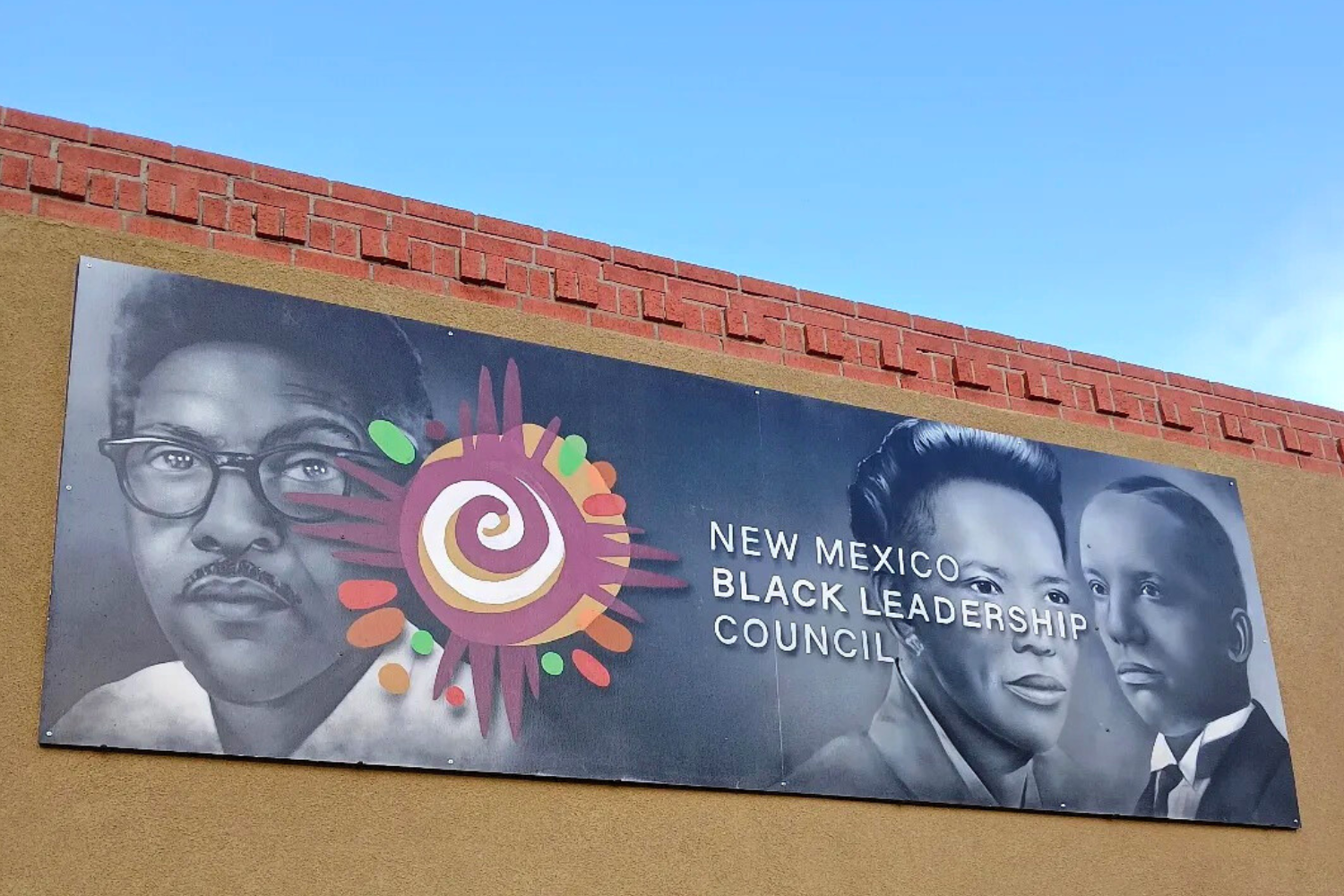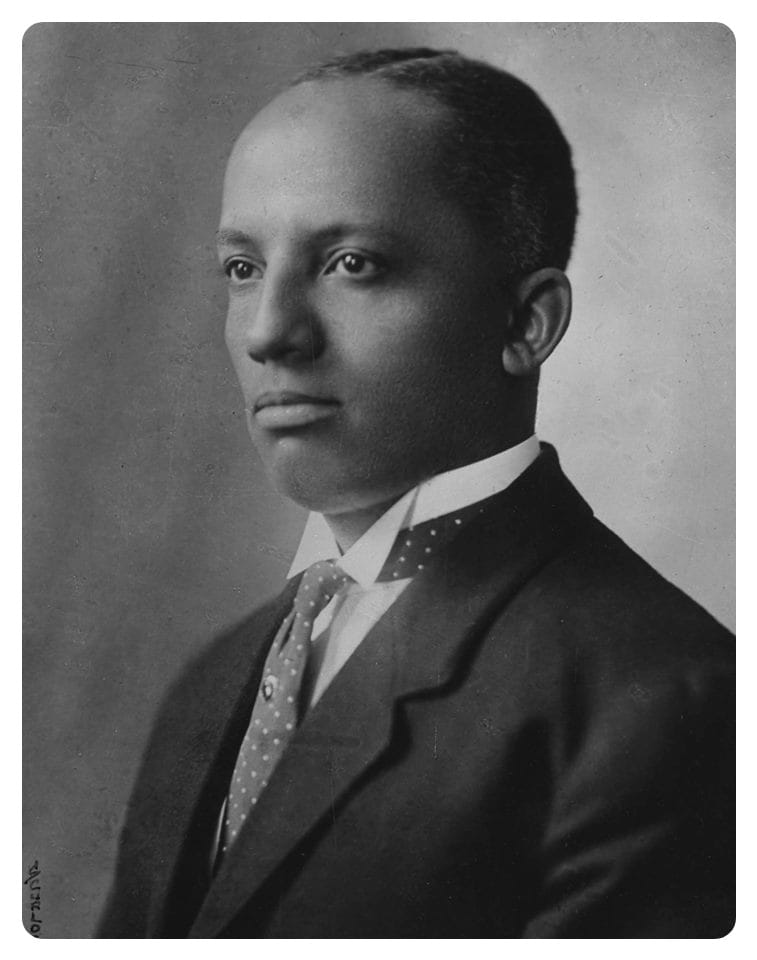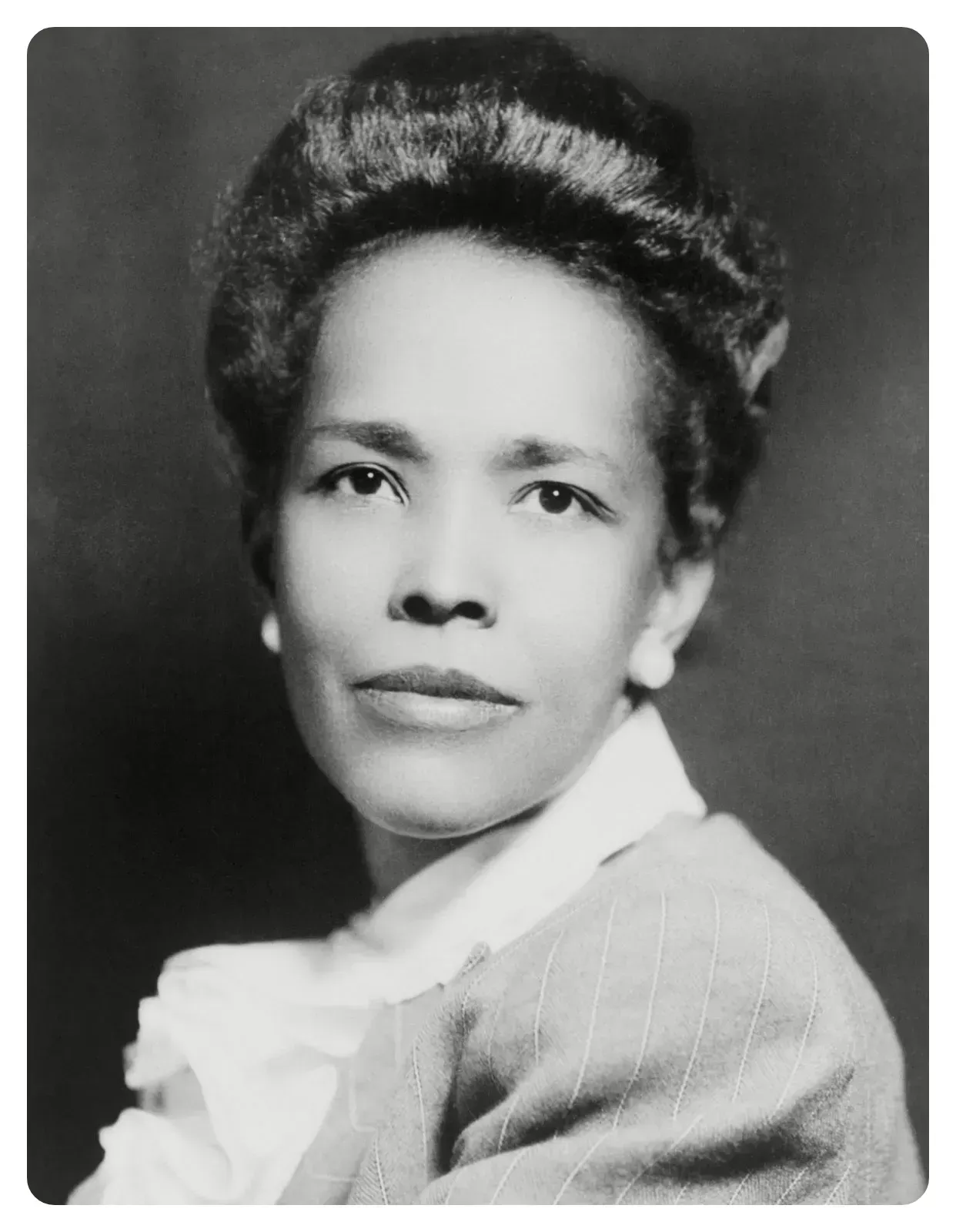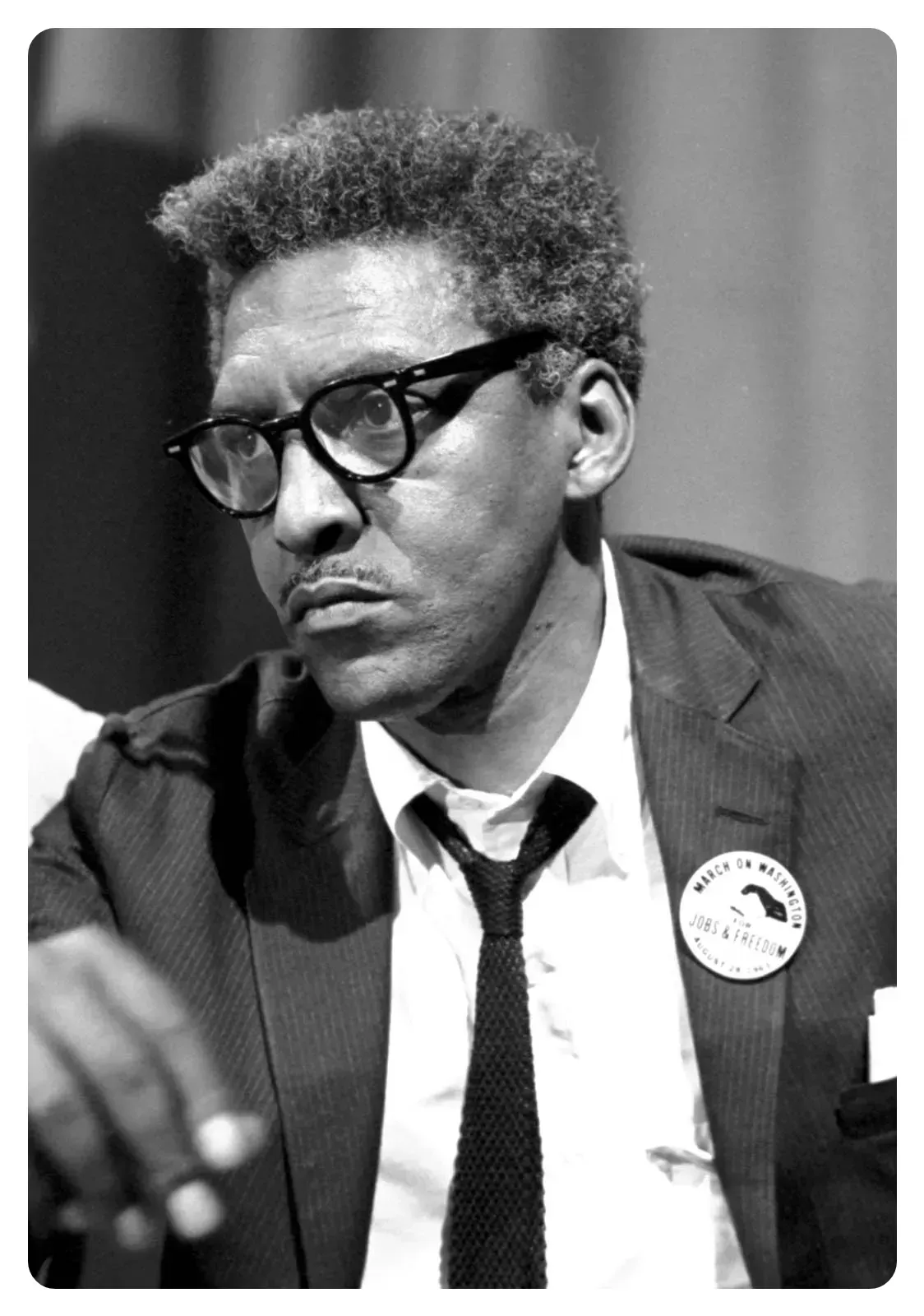Better Know a Hero: Guiding Lights Grace NMBLC Sign
Learn more about the guiding lights depicted on New Mexico Black Leadership Council's signage: Ella Jo Baker, Bayard Rustin, and Carter G. Woodson.

By Kristin Satterlee
Have you ever had a look at New Mexico Black Leadership Council’s (NMBLC) sign and wondered who these people are, and why they’re highlighted? Well, we’ve got you.

Carter G. Woodson
Historian and author Carter Godwin Woodson is often referred to as the “father of Black history.”
An improbable scholar, Woodson was born in 1875, and was so poor that he only attended school on rainy and snowy days when he couldn’t work his family’s six-acre farm. Nonetheless, after years working in coal mines, Woodson attended a rare all-Black high school. He eventually achieved a doctorate and a faculty position at Howard University.
Woodson believed that Black history was overlooked—and that “Those who have no record of what their forebears have accomplished” lost critical self-esteem and inspiration.
“Not so much a Negro History Week as it is a History Week.”
In 1926, Woodson launched Negro History Week in the second week of February, observing the birthdays of Frederick Douglass and Abraham Lincoln. In 1970, Black students and educators at Kent State University expanded the idea to the whole month.
Woodson wrote that “What we need is not a history of selected races or nations, but the history of the world void of national bias, race hatred and religious prejudice.”

Ella Jo Baker
You may have heard the quote, “We who believe in freedom cannot rest”—perhaps from Sweet Honey in the Rock’s “Ella’s Song.” But did you know that the “Ella” who said this is behind-the-scenes civil rights hero Ella Josephine Baker?
Baker was a major force in shaping the Civil Rights Movement, even as she struggled against its powerful male leaders and gendered hierarchy. She was an activist for five decades, starting her work with The National Association for the Advancement of Colored People (NAACP) in 1940. Baker is best known for co-founding the influential Southern Christian Leadership Conference (SCLC) and Student Nonviolent Coordinating Committee (SNCC).
"Give light and people will find the way."
Baker spoke out loudly in favor of grassroots activism. She believed that each person, given the tools, could be empowered to change their own lives and make a mark on the world. NMBLC’s mission and strategies are powerfully influenced by that philosophy.

Bayard Rustin
Bayard Rustin was key to the Civil Rights Movement’s commitment to nonviolence. In 1948, he learned techniques of nonviolent civil resistance from Gandhian leaders in India. In 1956, Rustin personally advised Martin Luther King, Jr. on nonviolent tactics amid the Montgomery bus boycott.
“The greatest demonstration for freedom,” according to Martin Luther King, Jr.
In 1963, Rustin was a key organizer of the March on Washington for Jobs and Freedom. The march brought an estimated quarter-million people to Washington to demonstrate for fair wages, voting rights, and an end to segregation. MLK delivered his groundbreaking “I Have a Dream” speech there, and the Civil Rights Act and Voting Rights Act were passed shortly after the powerful event, in 1964 and 1965.
Like Ella Jo Baker, Bayard Rustin was largely a behind-the-scenes influence on the Civil Rights Movement. While Baker struggled to be recognized because she was a woman, Rustin was relegated to the shadows as an openly gay man.
Rustin believed in nonviolence, democracy, respect, and “that all people are one.”
